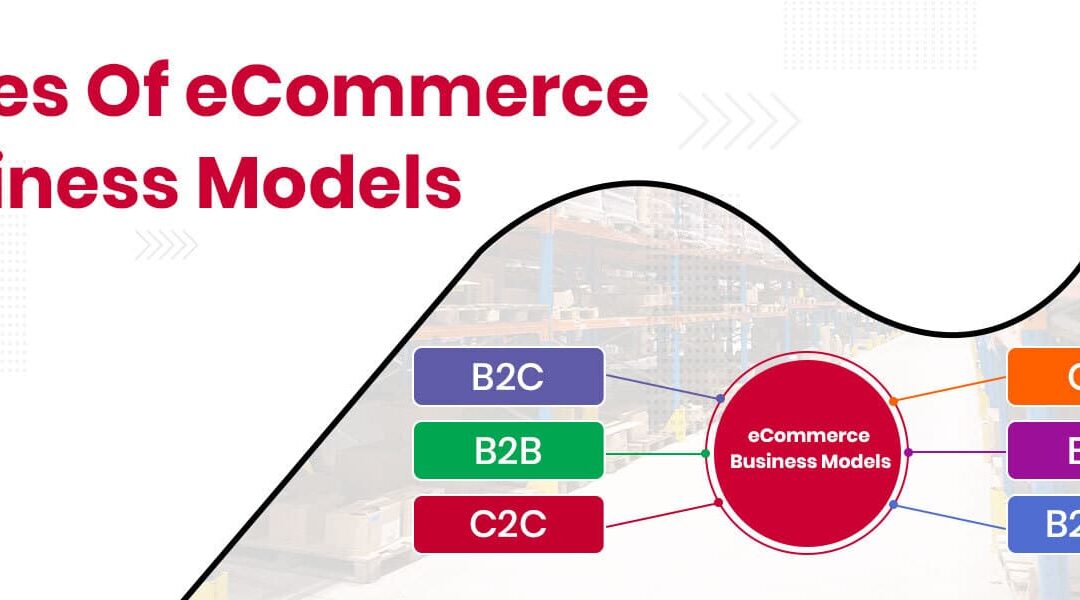eCommerce has exploded over the past few years, but of course, there are still new players in the market. In today’s competitive world, picking one from different types of eCommerce business models is the foundation of your success.
All the businesses that have become successful online have their eCommerce business models. By following a suitable eCommerce business model, one can reach a wider audience and generate good revenue.
If you want to leverage this growing industry, you should take your business online with the help of an eCommerce store. While jumping out excited about starting an eCommerce store, you shouldn’t forget one of the essential things, i.e., the eCommerce business model.
What is an eCommerce Business Model?
An eCommerce model is a business strategy that allows businesses and consumers to interact online over the internet. eCommerce websites provide a platform for consumers to view product information and make purchases.
How to Choose Your eCommerce Business Model?
Choosing the right eCommerce model is an important decision that affects your finances, time, and efforts. You must ask yourself some primary questions before you choose one. Let’s review a few examples:
- What do you want to sell and how much you’ll sell it for?
- Will you sell a single product or want to sell a range of products?
- Who is your audience? Who are they? What are their needs? What do they want?
- Which factors will you compete on? (selection, quality, price, service, or something else)
Getting these questions answered will help you to understand the different eCommerce business models, the various eCommerce platforms, and how each would benefit your eCommerce business.
The Most Common Types of eCommerce Business Models
There are many e-business models, but which one is right for you? We’ll take a look at six proven eCommerce business models that have been working for years and years. These are profitable and scalable, so go forth and apply them to your future endeavors.
1. Business-to-Consumer (B2C)
One of the most common eCommerce models is the B2C business-to-consumer model. This is when a company delivers goods to customers directly over the internet or from a handheld device.
The top B2C eCommerce companies include websites like Amazon, eBay, and Alibaba as well as brick-and-mortar stores like Nordstrom, H&M, J. Crew, etc. In general, B2C businesses are considered more straightforward because their products are available to purchase directly from the business itself instead of immediately having to go through a third-party seller.
2. Business-to-Business (B2B)
If your product or service is geared towards business needs, then a B2B eCommerce model is the way to go. You will need to network and reach out to established businesses to gain access to their processes and products. Your biggest challenge will be convincing them that your products/services are a great fit for theirs, even though you have similar offerings.
The biggest benefit of this type of eCommerce model lies in the fact that large order sizes are often ordered by businesses since they can provide value, and repeat orders are frequent. This is why most media companies and similar businesses choose to focus on B2B as their main way of generating revenue.
3. Consumer-to-Consumer (C2C)
Customer-to-Customer (C2C) is an eCommerce concept in which the product is sold directly from a business to its customer. It differs from B2C and B2B eCommerce models in that it does not involve any intermediary parties that may set up boundary disputes or have other difficulties concerning payment, delivery, and other issues. They allow users to trade, buy, sell and rent products and services. In all transactions, they receive a small commission from the sale or rental of a product or service. These platforms are complex and require careful planning to operate, as many have failed due to legal issues.
4. Consumer-to-Business (C2B)
One of the most popular types of eCommerce business models that are prevailing at this time is the customer-to-business (C2B) model. In this e-business model, freelancers are hired by clients to deliver services. These tasks are mainly commercial and freelancers do not require huge capital for the business operation. Most of these clients are commercial entities and freelancers are often individuals because they can outsource their work to them.
The C2B eCommerce business model is a hybrid of various e-business models. It involves a mix of lead generation activities and B2B product sales, and it hinges on strategic decision-making by the company. Reverse auction websites, freelance marketplaces, or affiliate marketing among others form part of this eCommerce model. This requires a solid understanding of marketing practices and technical skills for building such a website.
5. Business to Government (B2G)
THE B2G eCommerce business model is a business that sells its products to a government agency. This involves bidding on government projects. Governments usually put up requests for proposals and eCommerce businesses then have to bid on government projects for which they can submit the lowest bids. In some cases, a government agency would not come to place an order but rather get services from a contractor.
6. Business to Business to Consumer (B2B2C)
A B2B2C eCommerce business model refers to the selling of products by a supplier to another business and then that second business sees an opportunity to sell the product on its site to the consumer.
In this type of e-business model, there are three parties involved: you, the customer, and the business. The first one sells products on your behalf. You get the customer and make a profit by keeping a percentage of each sale.
eCommerce store owners choose this e-business model because it allows them to get more business from new customers than a regular brick-and-mortar store does. This is because even though customers are already familiar with the partner’s products and services, they can’t order from them online due to geographical location, hefty shipping costs, and others.
Hence, this eCommerce business model is most suitable for new eCommerce store owners who want to expand their customer base.
Final Words
We hope you’ve found this blog to be both useful and educational. Our goal is to provide you with useful insights into the eCommerce marketplace and enable you to increase your success. Now it’s your turn to choose one from the different types of eCommerce business models. To learn more about either of these eCommerce business models or shipping services for your eCommerce business, please contact NimbusPost. We are happy to help you!




